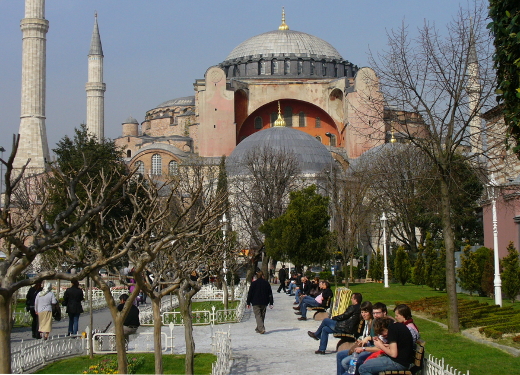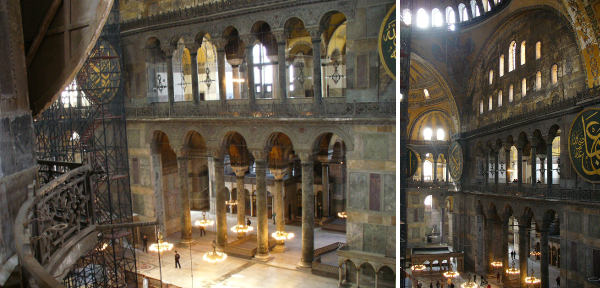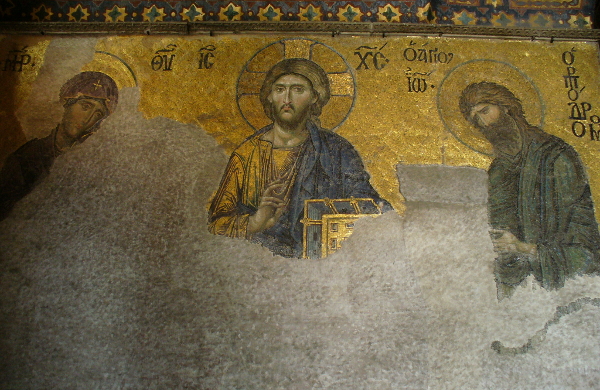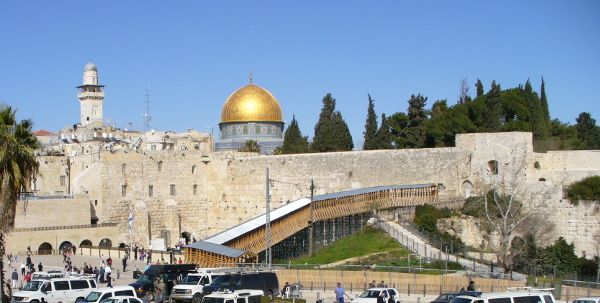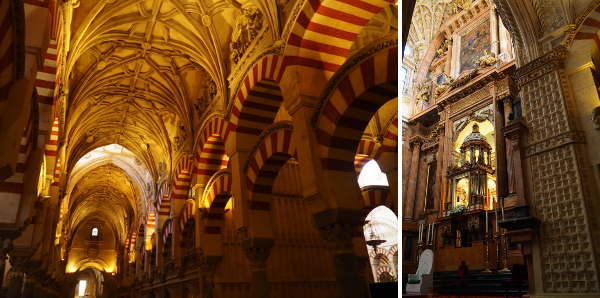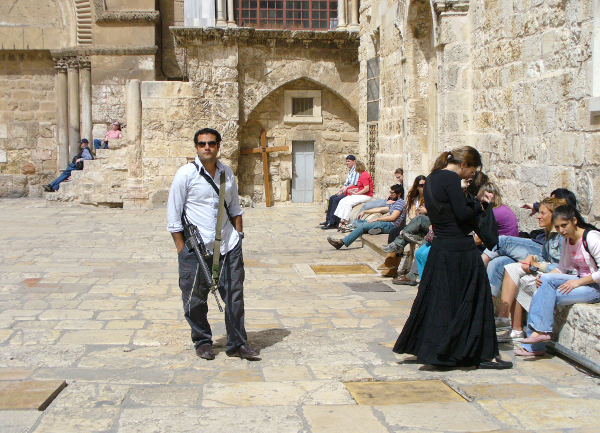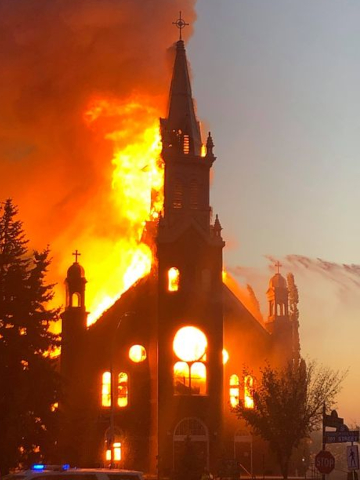
Reflections on Vancouver, British Columbia and other topics, related or not
Hagia Sophia:
Maybe now the
real iconoclasm begins
As the West destroys its secular monuments,
Islam might be suggesting more important targets
Greg Klein | July 11, 2020
Minarets, vertical buttresses and additional buildings
detract from Hagia Sophia’s original exterior.
(All photos by Greg Klein)
Turkey’s conversion of the mosque-cum-museum back into a mosque followed court proceedings that overturned a 1934 decision to convert the church-cum-mosque into a museum. Maybe the timing’s coincidental, but it comes during an especially menacing period for Western culture. Could Islam be trying to sway the mobs that have been demolishing historical monuments?
Of course Hagia Sophia has undergone tribulations before. Built on Justinian’s orders, it replaced a basilica at the same location that was destroyed by the Nika riots of 532. During the 8th and 9th centuries Hagia Sophia’s images and statuary fell victim to iconoclasm.
Then came the unspeakably perverse Fourth Crusade. A symbolic spectacle in the three-day binge of rape, murder and plunder was a prostitute drunkenly singing a bawdy song from the patriarch’s cathedra. The 1204 desecration might have been short-lived but the 57-year Latin occupation weakened Byzantium in the long run, contributing to its 1453 collapse.
Converted to a mosque, Hagia Sophia flaunted Islam’s power, although maybe also its cultural unoriginality. The building stayed that way for nearly half a millennium until the father of modern Turkey, Mustafa Kemal, turned it into a museum, part of a program of secularization and modernization, and possibly also a gesture to the West. But on July 10 President Recep Tayyip Erdogan declared Hagia Sophia would reinstate Muslim worship in two weeks. Thousands of people showed up to pray, many reportedly “crying with emotion at the symbolic triumph.”
Some interior scenes of Hagia Sophia.
Architecturally the church has had enormous influence, more consistently seen on mosques than churches. It was here that the floating dome, resting on pendentives instead of an arcaded or cylindrical structure, was accomplished on a large scale. The achievement, seemingly miraculous from both engineering and esthetic perspectives, influenced the spread of Christianity too. Hagia Sophia inspired the 987 report to Prince Vladimir from a Russian delegation investigating the major religions.
And we went into the Greek lands, and we were led into a place where they serve their God, and we did not know where we were, on heaven or on earth, and do not know how to tell about this. All we know is that God lives there with people and their service is better than in any other country. We cannot forget that beauty since each person, if he eats something sweet, will not take something bitter afterwards, so we cannot remain any more in paganism.
According to some accounts, that prompted Vladimir’s decree and Russia’s conversion.
Considered an especially magnificent work, this partly restored
depiction of Jesus, Mary and John the Baptist might face another
round of Muslim iconoclasm.
What’s in store for Hagia Sophia’s art isn’t clear. Some beautiful post-iconoclasm mosaics had been undergoing the slow, painstaking process of restoration after being plastered over by Muslims. Erdogan says the building will remain a UNESCO site. Could that mean some of the artwork would remain, maybe partitioned off from worshippers? Would restoration continue? Or does the church face additional indignities?
Moreover, could Turkey’s decision redirect the West’s iconoclasm from secular monuments? The West’s foreign enemies—Islam, China and others—might be doing more than sitting back watching our self-destruction. But whether Allah’s followers will it or not, a campaign against Christian sites seems like an idea whose time has come.
Obviously black congregations would be spared, as would some immigrant Christians. Natives, though, might turn on their own churches as part of the aboriginal pagan revival.
Even without sparking an in-house Fourth Crusade, Hagia Sophia’s fate is demoralizing indeed, especially after Notre Dame de Paris. Undiscouraged about the 6th century marvel, however, was classicist T.R. Glover. In his wonderful 1935 book The Ancient World, he wrote: “It is now to be a museum; but some, who have worshipped Christ in it, know that it still is, and will yet be, the Church of the Divine Wisdom.”
Update: On May 27, 2023, one day before Turkey’s presidential election and two days before the 470th anniversary of the Ottoman conquest of Constantinople, Recep Tayyip Erdogan led prayers in Hagia Sophia. Voters narrowly re-elected the “Islamist neo-Ottoman” on May 28, when crowds returned to the church-turned-mosque to celebrate his victory.
Related:
Covering Christian heritage
with a Muslim veil
Some other sacred sites in dispute
A guarded ramp leads to Jerusalem’s Dome of the Rock and (not visible) Al-Aqsa
mosque on Temple Mount, the third most sacred site in Islam. Behind the ramp
is the Western Wall, a remnant of the Jewish Second Temple and the most
sacred site in Judaism. In recent years Jews have ascended the ramp to pray
on Temple Mount, contrary to a ban on non-Muslim worship.
Built inside and above a former mosque, the cathedral of Cordoba
adds Gothic, Baroque and Renaissance features to the earlier
red-and-white arcades. Muslims have told the Vatican they want
to resume worship on the site, which hosted a Christian church
that was destroyed with the 8th century Islamic conquest.
A common sight in Israel, the gunman is there to protect a school group from
Palestinian terrorists. But the Church of the Holy Sepulchre behind him presents
further discouragement to Christians where denominations fight, sometimes
physically, over rights to certain areas within Christendom’s most holy place.
